Are you dreaming of breaking free from traditional housing? The tiny house movement and recreational vehicles have changed the game. They offer Australians flexibility and sustainability in housing.
Imagine living in a compact space that moves with you. This could be a tiny home or a caravan. Both offer unique benefits for those wanting to live on the move in Australia.
The debate between tiny homes and caravans has caught the attention of many. Prices for tiny homes range from A$50,000 to A$120,000. These homes are more than a trend; they’re a lifestyle change.
If you prefer to listen to the podcast about the article click below.
Key Takeaways
- Mobile living offers unprecedented housing flexibility
- Tiny homes provide more customization options
- Caravans remain popular among Australian travelers
- Off-grid systems are increasingly attractive
- Alternative housing solutions continue to evolve
What Is the Difference Between a Tiny Home and a Caravan?
Looking into alternative living spaces is big in Australia. Tiny homes and caravans are two great choices for those wanting to live simply. They both offer the chance to live in a small space, but they are very different.
Knowing the differences between these two options can help you choose the right path for your off-grid living.
Key Similarities and Differences in Design
- Tiny Houses: Usually under 37 square meters, made for permanent homes
- Caravans: Mainly for fun trips, with flexible living spaces
- Tiny houses often have:
- Bigger windows
- More ways to customize
- Better at keeping warm or cool
- Caravans usually have:
- Lower starting prices
- More freedom to move around
- Easier to park in caravan parks australia
Which Option Is Better for Long-Term Living?
It really depends on what you want and need. About 78% of tiny house fans like houses that can move. Tiny houses cost between A$50,000 and A$120,000. Caravans are cheaper, starting at under A$10,000.
“Living small isn’t about sacrifice, it’s about freedom and intentional living.”
How to Choose Between a Tiny Home and a Caravan
Think about these things when making your choice:
- How much money you have
- How important mobility is to you
- What you plan to do long-term
- How you feel about living off the grid
- What you prefer in terms of comfort
Both tiny homes and caravans have their own benefits for a simple, green lifestyle. Your best choice will match your lifestyle and future plans.
Legal and Registration Differences
Understanding the laws for compact dwellings in Australia is tricky. This is true for mobile homes and recreational vehicles. Knowing the rules is key for those interested in tiny homes and caravans.
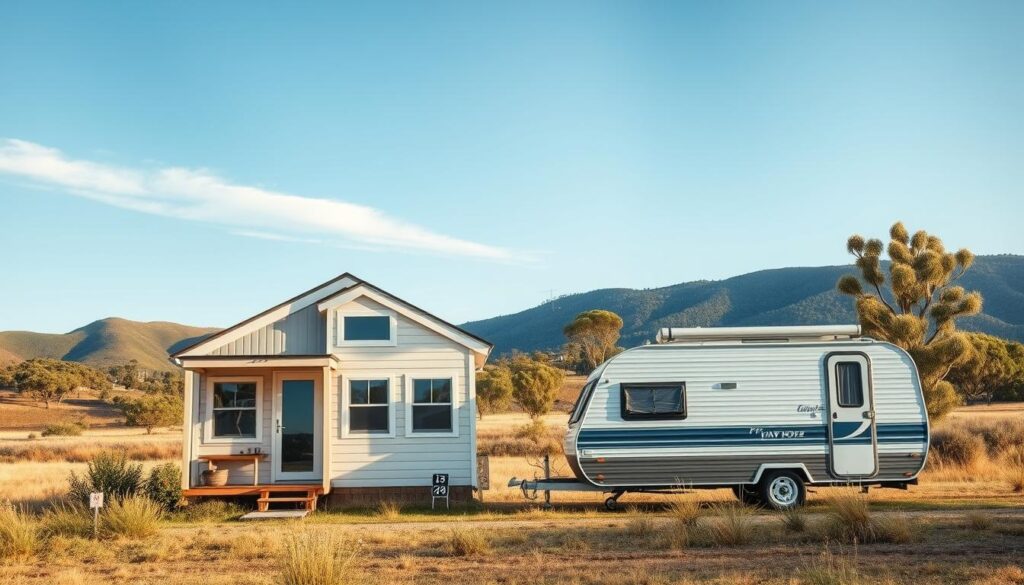
Council Approval Requirements
Tiny homes and caravans need different approvals in Australia. Your legal duties depend on several things:
- Where you place it
- How long you stay
- The type of property
- Local council rules
Zoning and Land Use Regulations
Australian councils have different rules for small living spaces. Here are some important points:
- New South Wales lets tiny homes as secondary homes
- Victoria’s Surf Coast Shire has a 2-year tiny house trial
- Mount Alexander Shire doesn’t need permits for tiny houses on wheels
Road and Towing Specifications
There are strict rules for moving tiny homes and recreational vehicles:
| Specification | Maximum Limit |
|---|---|
| Width | 2.5 meters |
| Height | 4.3 meters |
| Length | 12.5 meters |
| Weight | 4.5 tonnes |
Insurance and Compliance
It’s important to know about insurance for your investment. There are different rules for caravan parks and private properties.
“Tiny homes represent a unique housing solution that challenges traditional regulatory frameworks.” – Australian Housing Research Institute
Always talk to local authorities and experts. This ensures you follow the latest rules for your small living space.
Mobility and Travel Considerations
Exploring portable dwellings like tiny homes and caravans opens up exciting possibilities for affordable housing solutions in Australia. Your journey into mobile living requires careful consideration of mobility, practicality, and legal requirements.
Which Is Easier to Move: Tiny Home or Caravan?
When it comes to nomadic living, mobility is crucial. Tiny homes on wheels offer unique advantages for those embracing a downsizing lifestyle. They must comply with specific size restrictions:
- Maximum width: 2.5 meters
- Maximum height: 4.3 meters
- Maximum length: 12.5 meters
- Maximum weight: 4.5 tonnes
Fuel and Towing Costs Comparison
| Vehicle Type | Average Fuel Consumption | Towing Difficulty |
|---|---|---|
| Tiny Home | Higher fuel consumption | More challenging |
| Caravan | Lower fuel consumption | Easier to maneuver |
Parking and Location Considerations
Eco-friendly housing options like tiny homes and caravans have unique parking challenges. Different Australian states offer varied regulations:
- New South Wales allows temporary placement with specific permits
- Victoria permits up to 30 days without planning approval
- Queensland classifies tiny homes as caravans for placement
Best Locations for Full-Time Living
Some ideal locations for mobile living include coastal regions of Western Australia and rural areas with supportive local councils. Consider factors like:
- Utility access
- Zoning regulations
- Community infrastructure
- Climate suitability
“Tiny homes represent more than just a housing solution – they’re a lifestyle choice that embraces simplicity and sustainability.” – Sustainable Home Magazine
Your choice between a tiny home and caravan depends on personal preferences, budget, and desired level of mobility. Research local regulations carefully to ensure a smooth transition to your new portable dwelling.
Cost Comparison: Tiny Home vs. Caravan
Looking into sustainable housing in Australia shows interesting facts about portable homes and small living spaces. The money side of vanlife and campervan holidays is special. It’s something to think about for those wanting a different way to live.
Initial Purchase and Setup Costs
Starting with tiny homes or caravans means your money matters a lot. In Australia, building a tiny home costs between $60,000 and $120,000. You might also need to pay about $20,000 for site fees.
| Living Option | Initial Cost | Setup Expenses |
|---|---|---|
| Tiny Home | $60,000 – $120,000 | $20,000 additional |
| Caravan | $30,000 – $80,000 | $5,000 – $10,000 |
Maintenance and Ongoing Expenses
Living costs can change a lot, depending on where you live:
- Standard house monthly expenses: $1,920
- Tiny house monthly expenses: $440
Utilities and Sustainability Features
Small homes use less energy. Tiny homes need less power for heat and cool than big houses.
78% of surveyed individuals live in tiny houses on wheels, showing more people choose these homes.” – Australian Tiny House Association
Long-Term Value Assessment
Thinking about long-term value, tiny homes and caravans have their own perks. Tiny homes can be written off over 20 years. They might also make money through renting, with yields from 4.1% to 12.3%.
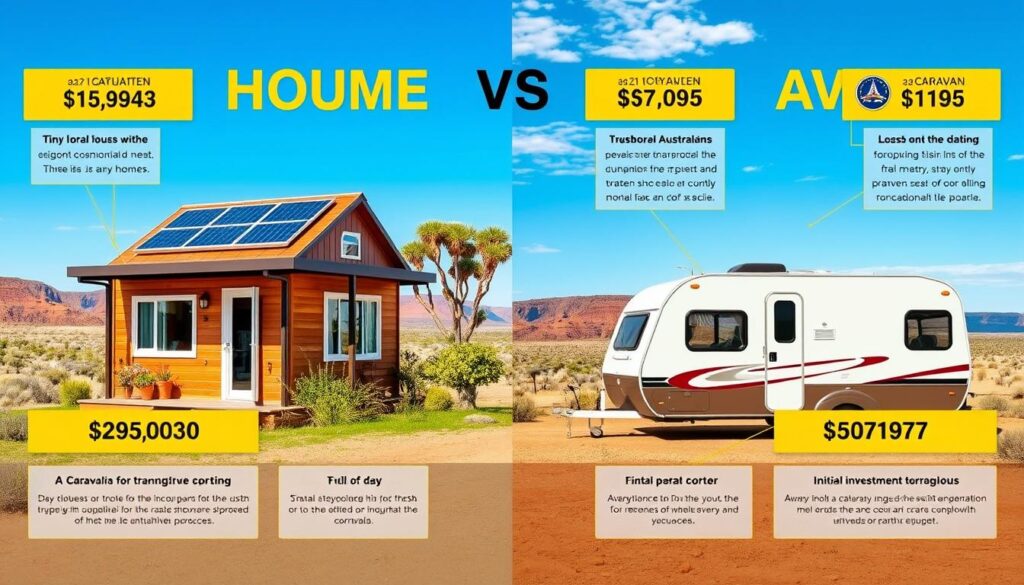
Choosing between a tiny home and caravan depends on your lifestyle, budget, and future plans. Both offer special benefits for living green and on the move.
Design and Space Differences
Looking into tiny homes and caravans shows us how living on the move can be done well. The tiny house movement has changed how Australians see homes. It offers new ways to live in small spaces.
Floor Space and Layout Comparison
Recreational vehicles and tiny homes are designed to be very efficient. Tiny homes are usually 100-400 square feet. They offer more space to customize than standard caravans. The main differences are:
- Modular interior configurations
- Multi-functional furniture
- Vertical storage solutions
- Customizable floor plans
Storage and Functionality Considerations
Smart storage is key in minimalist homes. Tiny houses often have:
- Hidden compartment designs
- Fold-down furniture
- Integrated appliance systems
- Compact kitchen layouts
Luxury and Customization Options
Modern tiny homes let you customize like never before. Clients can design spaces that show their style while staying mobile. Customizing costs between $71,900 and $93,900, making it very personal.
Comfort Levels: Which Feels More Like a Home?
“Tiny homes aren’t just smaller houses—they’re lifestyle statements,” says Australian tiny house designer Emma Richardson.
Comfort is up to what you like. Tiny homes often feel more like a home. They have better insulation, personal designs, and green features than regular RVs.
Sustainability and Off-Grid Living
Living simply means finding ways to be kind to the planet. Off-grid living is big in Australia, especially for tiny home and caravan fans. It’s all about green travel and homes.
Solar Power and Energy Efficiency
Most tiny homes use top-notch solar power. This makes them very energy smart. In fact, 78% of tiny home owners choose green energy.
Compared to regular caravans, tiny homes have:
- Super-efficient solar panels
- Great battery storage
- Appliances that use little energy
- Smart ways to manage energy
Water Collection and Waste Management
Good water and waste management is key for living green. Tiny homes do this well with:
- Systems to catch rainwater
- Composting toilets
- Recycling grey water
- Designs that use less water
Insulation and Climate Adaptability
Australia’s weather needs strong insulation. Tiny homes have better insulation than caravans. They use top materials like wool to:
- Save on heating and cooling
- Keep a steady temperature
- Use less energy
- Make living more comfortable
Best Off-Grid Solutions
For those downsizing in caravan parks in Australia, off-grid living can save money. Tiny homes are great for long-term green living. They come with full off-grid systems.
“Sustainable living is not about sacrifice, but about smart design and conscious choices.” – Australian Sustainable Living Expert
Building and Material Durability
Exploring small living spaces in Australia means looking at how well they’re built. Mobile homes and RVs have different strengths that affect your life there.
Structural Strength Comparison
Tiny homes and caravans are built differently. They use steel framing, which is strong but light. This is good for mobile homes because it helps them move easily.
- Steel framing reduces overall vehicle weight
- Allows for easier transportation
- Provides excellent structural integrity
Weather Resistance in Australian Conditions
Australia’s weather is tough, so buildings need to be strong. Colorbond steel is great because it lasts long and keeps safe from fire. It’s perfect for tiny homes and RVs.
| Material Feature | Tiny Home | Caravan |
|---|---|---|
| Insulation Value | R1.4 subflooring | Varies by model |
| Wall Insulation | Earthwool® R-2.5 | Standard polyester |
| Recycled Material | Up to 80% | Limited options |
Bushfire and Cyclone Considerations
Choosing between a tiny home and an RV affects how well it stands up to bad weather. Tiny homes might need extra help to stay safe in Australia’s harsh weather.
Durability isn’t just about materials—it’s about smart design and strategic protection.
Lifespan and Maintenance
How long your small home lasts depends on its materials and care. With the right upkeep, both tiny homes and RVs can be cozy places to live. Using good paint and cabinets can make your home last longer.
Choosing between a tiny home and an RV should think about durability, comfort, and your lifestyle.
Living Experience: Tiny Home vs. Caravan
Exploring nomadic living shows us affordable and portable homes. Choosing between a tiny home and a caravan changes your life a lot. It affects your comfort and how you connect with others.
Many things make tiny homes different from caravans. Knowing these differences helps you decide on a downsizing lifestyle.
Comfort and Lifestyle Differences
Tiny homes feel more like a real home than caravans. They are 15-18 square meters big. These homes are:
- Customizable inside
- Well-insulated
- Can have a real foundation
Space for Families vs. Solo Travellers
Who you are affects your choice between tiny homes and caravans. Most tiny homes are for:
| Living Arrangement | Typical Capacity |
|---|---|
| Solo Travelers | Ideal |
| Couples | Comfortable |
| Families | Challenging |
Noise and Privacy Considerations
The sound around you matters a lot. Tiny homes usually have:
- Better sound blocking
- Stronger walls
- More privacy
Community and Social Aspects
“Tiny house living is about experiences, not possessions.” – Australian Tiny House Association
How you connect with others differs between tiny homes and caravans. Since 78% of tiny home owners move around, they find friends through:
- Shared spaces
- Tiny house villages
- Online groups
Choosing between a tiny home and caravan depends on what you want. It’s about your lifestyle and openness to new living ways.
Tiny Home vs. Caravan for Airbnb and Rentals
Portable accommodations are changing the game in Australia’s short-term rental market. Vanlife Australia has led a revolution in small living spaces. This offers great chances for both property owners and travelers.
Success in rentals depends on several important factors. These can make your campervan or tiny home a smart investment.
Rental Yield Comparison
- Tiny Home Rental Yields:
- 30 nights per year: 4.1% return
- 60 nights per year: 8.2% return
- 90 nights per year: 12.3% return
- Typical Investment Range: $60,000 to $120,000
- Potential Annual Income: Around $4,500 at 30 nights
Best Locations for Renting
Choosing the right spot can boost your rental earnings. Look for coastal areas, national parks, and tourist spots in Sydney, Melbourne, Brisbane, and regional areas.
Guest Comfort Considerations
Guest happiness is key for successful rentals. Think about these comforts:
- High-quality bedding
- Modern kitchen facilities
- Reliable internet connection
- Climate control systems
Legal Rental Considerations
“Know your local regulations to avoid potential legal complications with short-term rentals.”
Important legal points include:
- Council approval requirements
- Maximum occupation duration
- Insurance specifications
- Zoning restrictions
With the right planning, your portable home can thrive in Australia’s rental market.
Future Trends in Tiny Homes and Caravans in Australia
The tiny house movement in Australia is changing how we think about homes. With high housing prices, people are looking at tiny homes and caravans. The average home price is now $959,300, making tiny homes a good choice for affordable living.
More people want homes that are good for the planet. Tiny homes and caravans are becoming popular for their green living benefits. A high-end tiny home costs between $93,500 and $130,000, which is much less than a regular house.
Government policies are starting to support tiny homes. It’s easier to get a tiny home on the road now. The COVID-19 pandemic has made these small homes even more popular for their flexibility and eco-friendliness.
The future of living in a tiny home or caravan looks bright. New designs and off-grid options are making homes more flexible and affordable. These options are great for those who want a home that fits their lifestyle and budget.

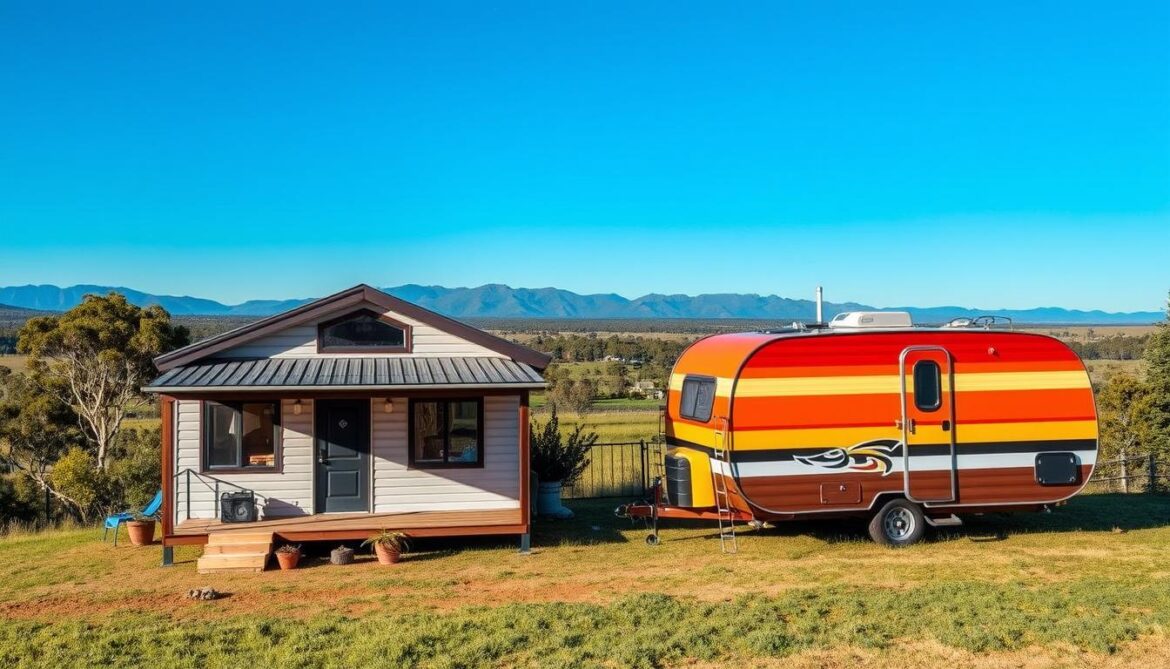
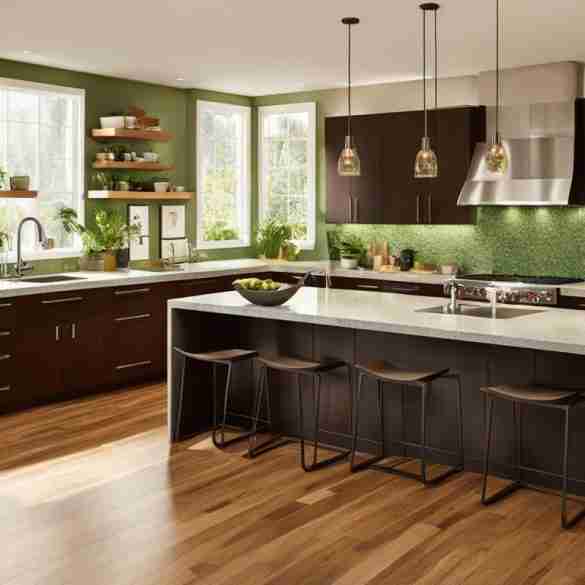

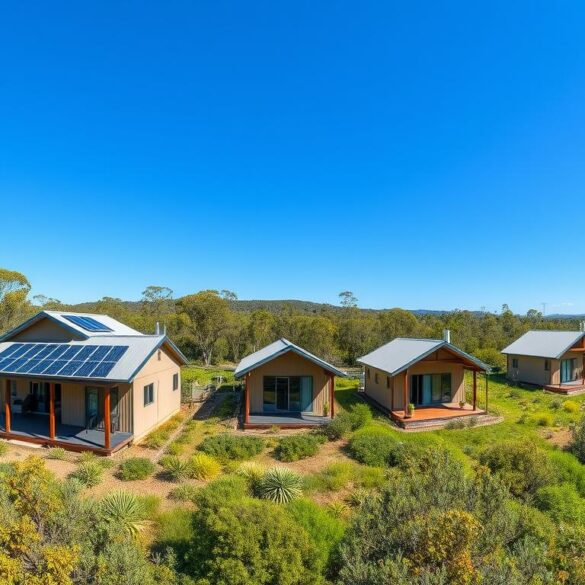
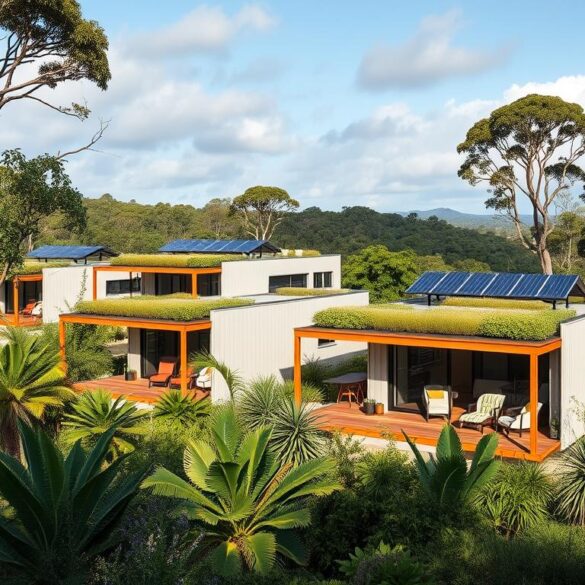
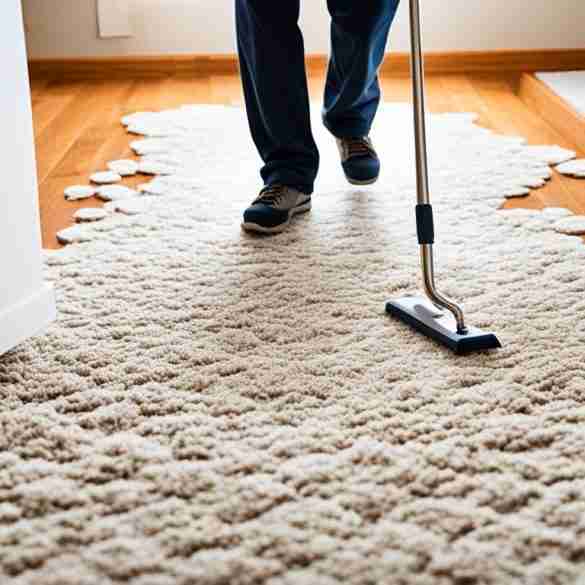
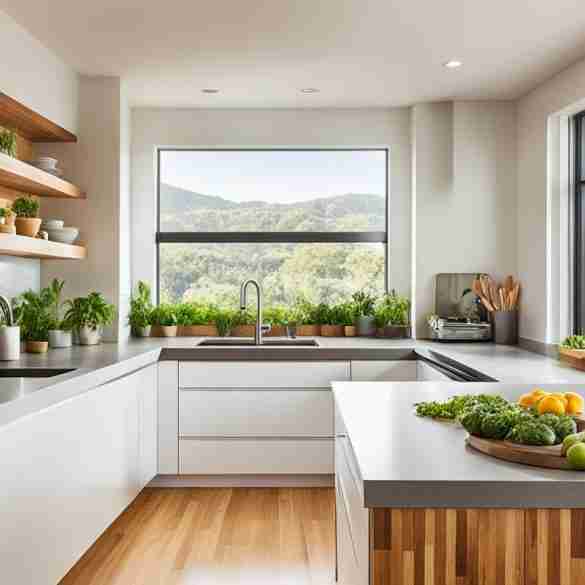
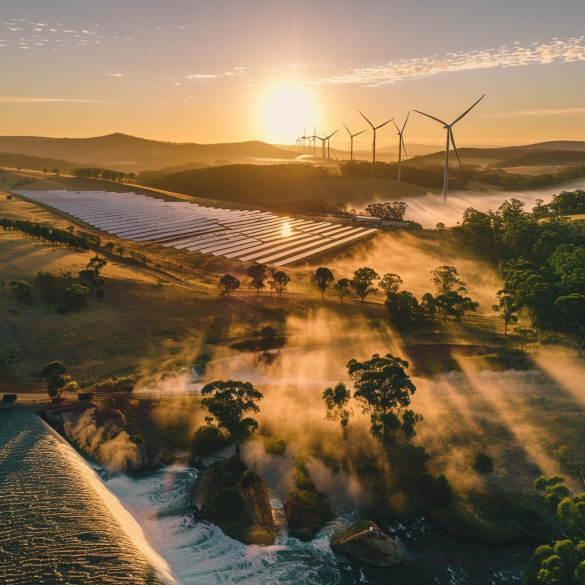
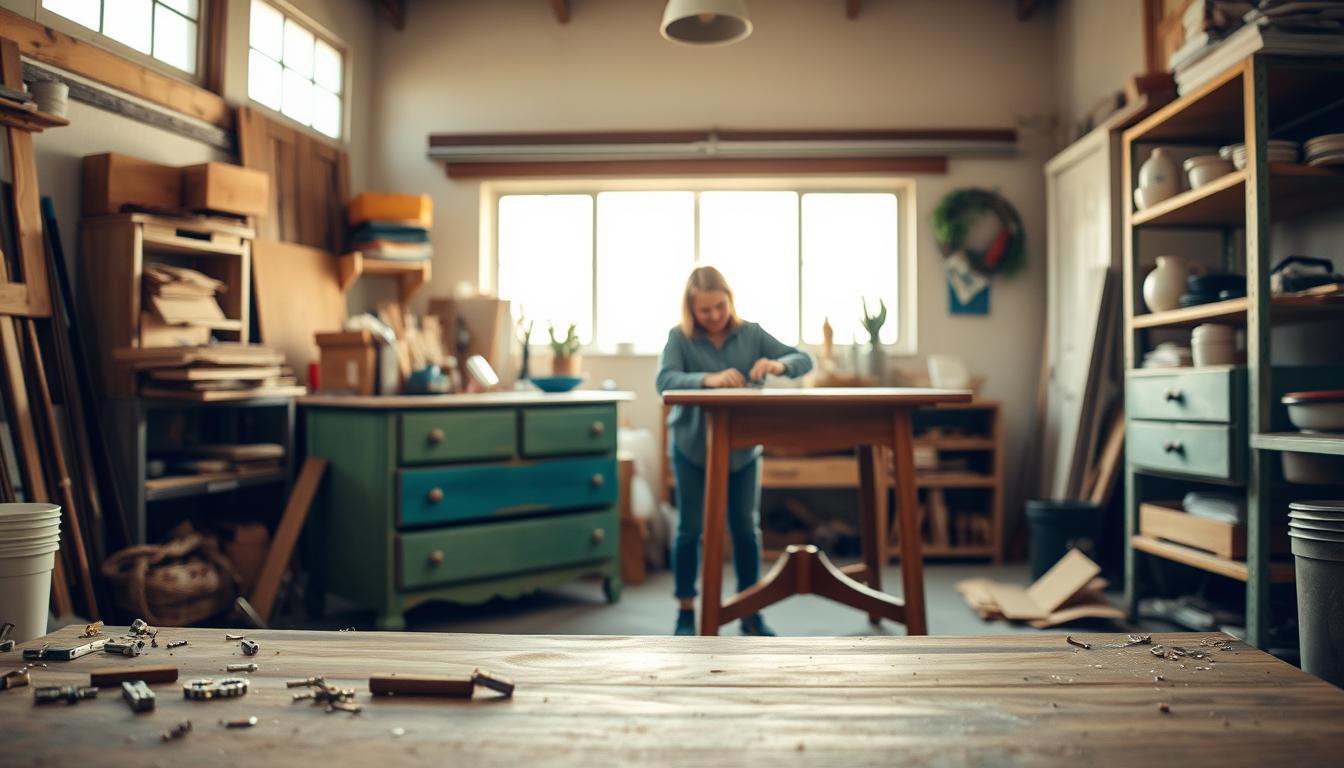
1 comment
[…] tiny home living helps you see if it fits your life and […]